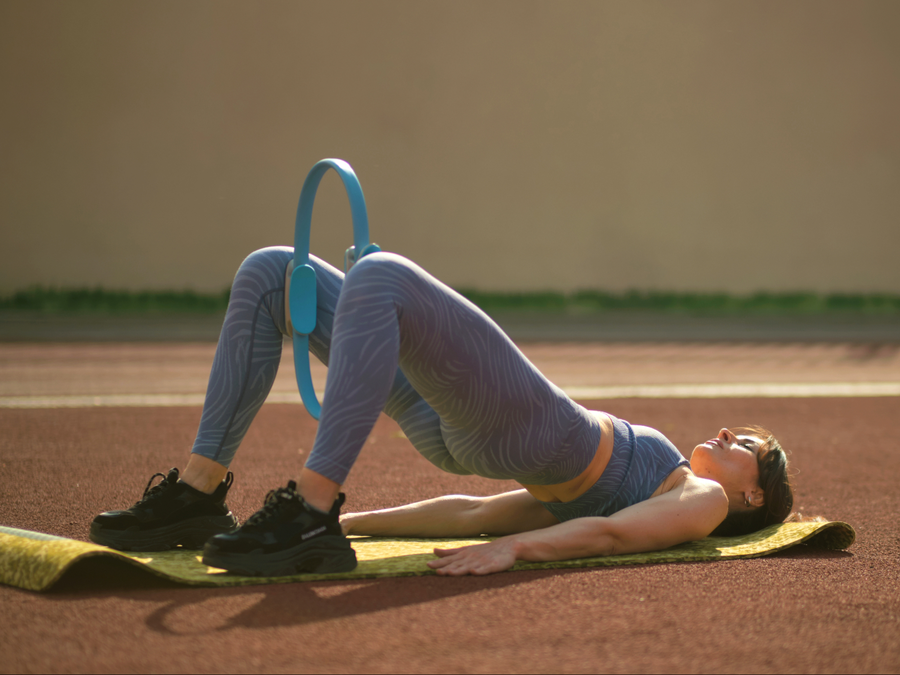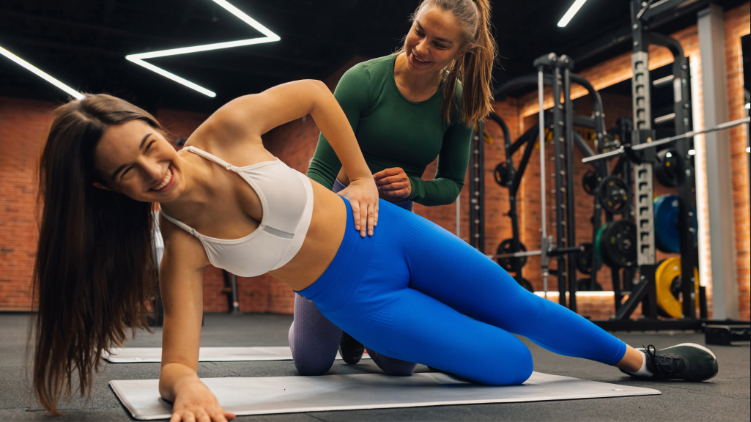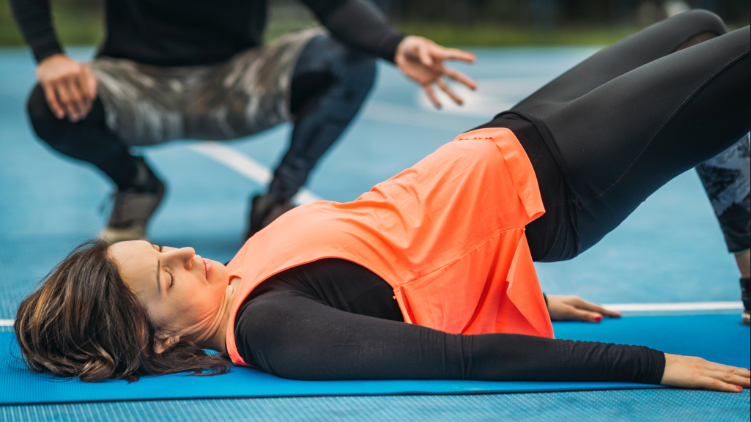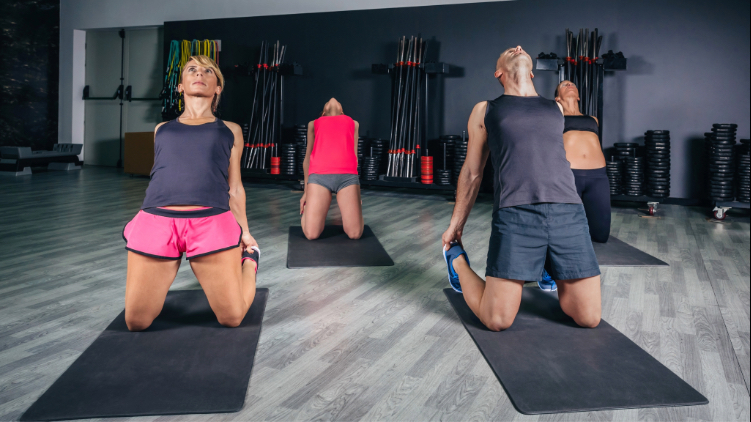Welcome



Are you ready to elevate your glute game and unlock your endurance potential? The hip thrust is a powerhouse exercise that not only sculpts your buttocks but also builds explosive lower-body strength for a wide range of athletic activities. In "The Ultimate Guide to Hip Thrust Form, Setup, and Progression," we’ll dive deep into everything you need to know to master this essential movement.
From perfecting your form to creating a solid setup and gradually increasing your intensity, this comprehensive guide is designed to help beginners and seasoned lifters alike maximize their results. Whether you're hitting the gym or setting up a home workout space, we'll provide expert tips and techniques to ensure every rep counts. Get ready to transform your fitness journey—let's perfect that hip thrust!
Benefits of Hip Thrusts for Strength and Aesthetics

Hip thrusts are one of the most effective exercises for building glute strength and enhancing lower body aesthetics. By isolating the glute muscles, hip thrusts enable targeted activation, resulting in hypertrophy and strength gains that are difficult to match with other exercises. The primary benefit is the development of the gluteus maximus, medius, and minimus, which are essential for powerful and functional movement patterns.
Beyond aesthetics, hip thrusts play a crucial role in improving athletic performance. Strong glutes contribute to improved sprinting speed, jumping ability, and overall lower-body explosiveness. For athletes, this means enhanced performance in sports that require quick bursts of power and agility. Moreover, strong glutes help stabilize the pelvis and lower back, reducing the risk of injuries and improving posture.
Incorporating hip thrusts into your routine also provides functional benefits that translate to everyday activities. Whether you're lifting heavy objects or simply standing for extended periods, strong glutes support the lower back and prevent discomfort. Additionally, for those who spend long hours sitting, hip thrusts counteract the negative effects of prolonged sitting by strengthening and activating the posterior chain.
Proper Hip Thrust Form: Step-by-Step Guide

Proper hip thrust form is crucial for benefits and preventing injury. Sit on the ground with your upper back against a bench, your feet flat and shoulder-width apart, and your knees at a 90-degree angle. Center a barbell on your hips and use a pad or towel for comfort.
Engage your core and glutes. Drive through your heels to lift the barbell until your thighs are parallel to the floor. At the top, your body should form a straight line from shoulders to knees. Squeeze your glutes and hold for a brief moment before lowering.
Maintain control on the descent and keep your glutes engaged. Ensure your neck and spine stay neutral without overarching your back. Practice consistently to perfect your hip thrust form and maximize benefits.
Common Mistakes to Avoid in Hip Thrusts
One of the most common mistakes in hip thrusts is using too much weight too soon. While it may be tempting to load up the barbell, prioritizing a balanced approach is crucial, especially for beginners. Using excessive weight can compromise your form, leading to potential injuries and reducing the effectiveness of the exercise. Start with a manageable weight, and when you're comfortable, increase it.
Incorrect foot placement is a common mistake. To optimize glute activation, position your feet shoulder-width apart with knees at a 90-degree angle. This alignment improves lift efficiency.
Improper hip extension is another issue to be aware of. Many lifters fail to fully extend their hips at the top of the movement, which limits the range of motion and reduces the exercise's effectiveness. Focus on driving your hips upward until your body forms a straight line from shoulders to knees. Additionally, avoid overarching your lower back by maintaining a neutral spine throughout the lift.
Equipment Setup for Hip Thrusts
Setting up your equipment correctly is key to performing hip thrusts safely and effectively. Start with a sturdy bench or platform that won't shift or move during your lifts. The bench should be at a height that allows your upper back to rest comfortably while keeping your feet flat on the ground. Ensure the bench is stable and won't tip over as you perform the exercise.
Next, choose a suitable barbell for your hip thrusts. A standard Olympic barbell works well for most lifters, but you can also use a shorter barbell if space or comfort is a concern. To protect your hips from discomfort, use a barbell pad or wrap a towel around the bar. This cushioning will make the exercise more comfortable, allowing you to focus on your form.
In addition to a barbell, you may also need weight plates, depending on your level of strength training. Start with lighter weights and gradually increase as you become more comfortable with the movement. If you're new to hip thrusts, consider using resistance bands or bodyweight variations to build a solid foundation before progressing to heavier weights.
Variations of Hip Thrusts for Different Fitness Levels

Hip thrusts can be modified to suit various fitness levels, from beginners to advanced lifters. For those new to the exercise, bodyweight hip thrusts are a great starting point. These involve performing the movement without added weight, focusing solely on mastering the form and activating the glutes. Once comfortable, you can progress to using a resistance band around your thighs to increase the challenge.
Intermediate lifters can incorporate the barbell hip thrust, which adds external resistance and further stimulates muscle growth. Another effective variation is the single-leg hip thrust, which requires balance and unilateral strength. By performing the movement on one leg at a time, you can address any muscle imbalances and enhance overall stability.
Advanced lifters can explore more challenging variations, such as banded barbell hip thrusts, where resistance bands are added to the barbell to increase tension at the top of the lift. Another option is the hip thrust with a pause, where you hold the top position for a few seconds to maximize glute activation. These variations keep the exercise challenging and prevent plateaus in your training.
Progression Techniques for Hip Thrusts
To continue making progress with hip thrusts, it's essential to implement effective progression techniques. One approach is to increase the weight you're lifting gradually. Begin with a manageable load and gradually add small increments over time. This progressive overload ensures that your muscles are continually challenged, leading to gains in strength and hypertrophy.
Another technique is to vary the tempo of your lifts. Slowing down the eccentric (lowering) phase of the movement can increase time under tension and enhance muscle activation. Alternatively, incorporating pauses at the top of the lift can intensify the contraction and promote greater muscle engagement. These tempo variations add diversity to your training and stimulate muscle growth.
Additionally, you can increase the volume of your hip thrust workouts by adding more sets or reps. Be mindful of your overall training volume and ensure adequate recovery between sessions. Combining these progression techniques with proper nutrition and rest will help you achieve consistent gains and avoid plateaus in your hip thrust performance.
Incorporating Hip Thrusts into Your Workout Routine
Integrating hip thrusts into your workout routine can enhance both strength and aesthetics. Depending on your training goals, you can perform hip thrusts multiple times per week. For muscle hypertrophy, aim for 3-4 sets of 8-12 reps, focusing on controlled movements and proper form. For strength gains, opt for heavier weights with lower rep ranges, such as 4-6 reps per set.
Hip thrusts can be included in various workout splits. On lower-body days, pair them with other compound exercises, such as squats and deadlifts, to target the glutes from different angles. Alternatively, you can incorporate hip thrusts into full-body routines or glute-focused workouts. The versatility of hip thrusts makes them a valuable addition to any training program.
To maximize the benefits, consider combining hip thrusts with complementary exercises that target the glutes and lower body, such as lunges, step-ups, and glute bridges. This holistic approach ensures balanced muscle development and prevents overuse injuries. Consistency and variety in your training will help you achieve optimal results from your hip thrust workouts.
Revolution Nutrition offers a wide range of supplements to support you on your hip thrust journey. There are numerous benefits to be gained, including muscle recovery and strength, which are crucial for performing this exercise effectively. You can use our protein powders, such as the Whey Complex, which helps with muscle repair and development. We also offer various supplements that can enhance and boost your strength and energy, thereby improving your overall performance. Therefore, by incorporating supplements from Revolution Nutrition, you can improve your fitness regimen and maximize the benefits of your workouts.
Conclusion
Mastering the hip thrust is a game-changer for anyone looking to enhance their glute strength, improve athletic performance, and achieve a more sculpted lower body. By focusing on proper form, setting up your equipment correctly, and incorporating progressive techniques, you can unlock the full potential of this powerful exercise. Whether you're a beginner or an advanced lifter, hip thrusts offer a versatile and effective way to elevate your fitness journey.